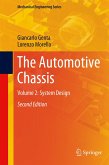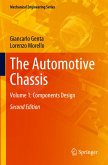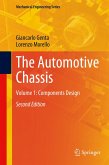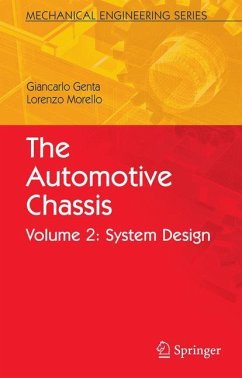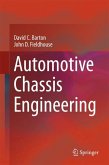This textbook draws on the authors' experience gained by teaching courses for engineering students on e.g. vehicle mechanics, vehicle system design, and chassis design; and on their practical experience as engineering designers for vehicle and chassis components at a major automotive company. The book is primarily intended for students of automotive engineering, but also for all technicians and designers working in this field. Other enthusiastic engineers will also find it to be a useful technical guide.
The present volume (The Automotive Chassis - Volume 2: System Design) focuses on the automotive chassis as a system, providing readers with the knowledge needed to integrate the individual components described in Volume 1 in a complex system that satisfies customers' expectations. Special emphasis is given to factors influencing system performance, including:
- the influence of the powertrain on vehicle performance. Conventional, hybrid and electric powertrains are considered;
- factors influencing vehicles' handling performance;
- factors influencing vehicles' comfort performance; and
- factors influencing vehicles' stability and strategies for accident avoidance (active safety).
In addition, this second volume thoroughly covers topics that are usually neglected in other books about the automotive chassis, such as:
- the basics of vehicle aerodynamics;
- internal combustion engines, electric motors and batteries; and
- mathematical modeling tools.
This thoroughly revised second edition has been updated to reflect the latest advances in electric and hybrid vehicles, electronic control systems and autonomous driving.
The present volume (The Automotive Chassis - Volume 2: System Design) focuses on the automotive chassis as a system, providing readers with the knowledge needed to integrate the individual components described in Volume 1 in a complex system that satisfies customers' expectations. Special emphasis is given to factors influencing system performance, including:
- the influence of the powertrain on vehicle performance. Conventional, hybrid and electric powertrains are considered;
- factors influencing vehicles' handling performance;
- factors influencing vehicles' comfort performance; and
- factors influencing vehicles' stability and strategies for accident avoidance (active safety).
In addition, this second volume thoroughly covers topics that are usually neglected in other books about the automotive chassis, such as:
- the basics of vehicle aerodynamics;
- internal combustion engines, electric motors and batteries; and
- mathematical modeling tools.
This thoroughly revised second edition has been updated to reflect the latest advances in electric and hybrid vehicles, electronic control systems and autonomous driving.


